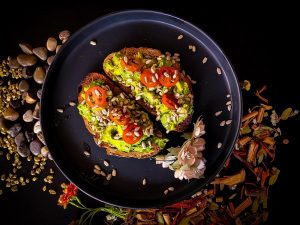When it comes to the heat of a chili pepper, there are seven key factors that contribute to the amount of heat you find in each individual pepper. Some peppers have more heat than others due to these factors, but they can also be influenced by where they grow, how they are grown, and how they are processed after harvest. Here is a quick look at these seven factors:
Sunlight Exposure – The amount of sunlight a pepper receives is one factor that contributes to its heat. Peppers grown in greenhouses or indoors will not receive as much heat as those grown outdoors in full sun. Those that do not receive as much sun do not produce as many capsaicinoids because capsaicinoids are created as a reaction to sunlight. As the plant tries to protect itself from the sun’s powerful rays, it produces capsaicinoids as a defense mechanism.
Phenotypic Variation – Some plants just naturally produce hotter peppers than others. This is called phenotypic variation and occurs within certain species of peppers (but not all). In this case, some plants will be better at producing capsaicinoids than others.
Environmental Factors – Aside from just sunlight exposure, other environmental factors can cause peppers to produce more capsaicinoids. When the temperature
If you are a chili pepper fanatic like myself, you might be curious to know what factors contribute to the heat of a chili pepper. There are several factors that play a part in how hot a chili pepper is. These factors include:
The species and variety of the pepper
The growing conditions
The climate during the growing season
The maturity of the pepper at harvest time
Whether it was dried or fermented in any way
A combination of all of these things
The heat of a chili pepper is measured by the amount of capsaicinoids it contains. Capsaicinoids are alkaloid molecules produced in the placenta tissue surrounding the seeds. The highest concentrations of capsaicinoids are found in the veins of the chili pepper, which you can see as white lines on the inside of the pepper.
The heat of a chili pepper is measured in Scoville Heat Units (SHU), named after Wilbur Scoville, an American chemist who developed a test for rating peppers. Pure capsaicin, the chemical responsible for chili pepper heat, scores at 16 million SHU.
Many factors determine how much capsaicin is present in a chili pepper – here are 7:
Species and Type – The species and type of chile plant will determine how hot it can get. For example, habanero peppers are generally hotter than jalapenos with an average range between 100,000-350,000 SHU while jalapenos measure between 2,500-8,000 SHU. Within these two types there can be varieties that produce even hotter peppers though like Carolina Reaper peppers which average 1,569,300 SHU!
Size – The larger the fruit (the main
When it comes to the heat of chilies, there are many factors that contribute to the heat level some peppers are more hot than others. The seven most important factors are:
1) The type of pepper
2) Location in which they were grown
3) Time of year harvested
4) How much sunlight they received during growing season
5) Amount of water used during growing season
6) How long the pepper was allowed to ripen on vine before being picked
7) The amount and type of fertilizer used during growing season
The heat in a chili pepper is measured on the Scoville scale, which rates peppers on a scale from 0 to 16,000,000 SHU (Scoville Heat Units). The higher the number, the hotter the pepper.
The actual heat level of any given chili is dependent upon several factors. While most people believe that a habanero will always be hotter than a jalapeno, it is actually possible – albeit rare – to find a jalapeno that has a higher Scoville rating than a habanero.
The heat of a chili pepper is measured in Scoville Heat Units (SHU). Originally the SHU was determined by diluting an extract of chilies with sugar water until the “heat” could no longer be tasted. For example, to have a heat rating of 1000 SHU it would take 1000 parts of sugar water to 1 part of chili extract.
Nowadays, High Performance Liquid Chromatography (HPLC) is used to determine the amount of capsaicinoids present in a chili and then calculate the SHU. A pungency unit is defined as one part per million (ppm) of capsaicin. The measured concentration of capsaicinoids by HPLC will be given in ppm and then converted to Scoville Heat Units using an appropriate conversion factor.
The factors that affect the heat level of a chili pepper are:
1.The variety or cultivar – There are over 100 different varieties of chilies that vary from sweet bell peppers to the fiery habanero. For example, a Bhut Jolokia chili has an average heat rating of 1,041,427 SHU whereas a mild bell pepper has a heat rating of 0 SHU.
2.The environment – Chili plants grown in cooler climates will produce hotter
Chili peppers can vary greatly in terms of heat, not only from variety to variety, but also from year to year depending on the weather. The factors that determine the heat level of chili peppers include the seed lineage, capsaicin concentration and amount of dihydrocapsaicin in the pepper.
The Scoville Scale was created by Wilbur Scoville in 1912 as a way to measure the pungency, or heat level, of chili peppers. The scale ranges from 0-16 million Scoville Heat Units (SHU). A pure capsaicin extract is rated at 15-16 million SHUs. Peppers that are on the mild side have 100-500 SHUs, while habaneros can be as high as 350,000 SHUs.
To put this into perspective, here are some of the most common chili pepper varieties and their respective heat levels:
Bell peppers: 0 SHU
Paprika: 500-1,000 SHUs
Anaheim: 500-1,000 SHUs
Jalapeño: 2,500-8,000 SHUs*
Cayenne: 30,000-50,000 SHUs*
Habanero: 100,000-350,000 SH
